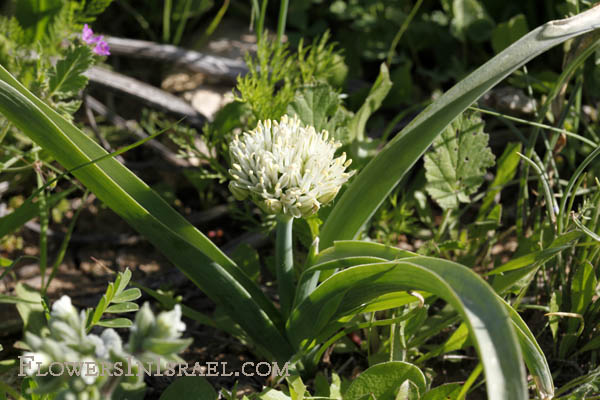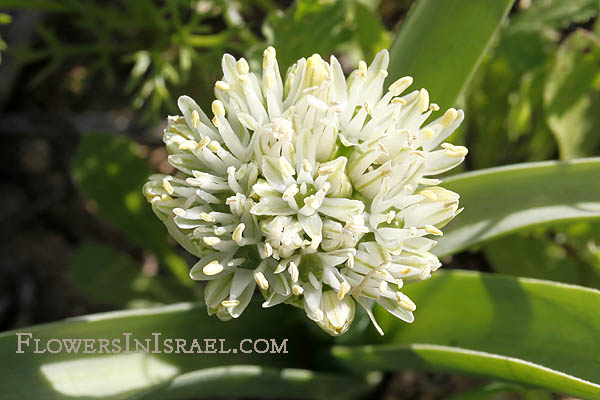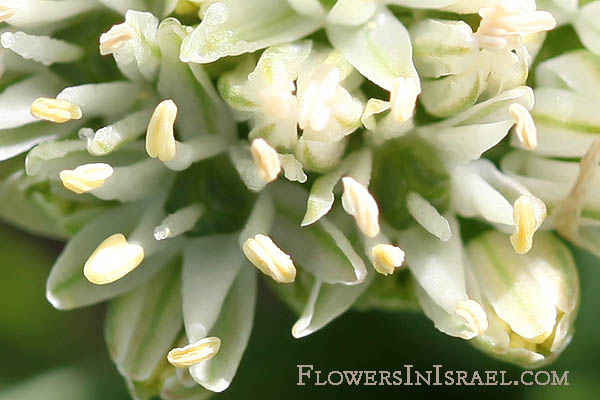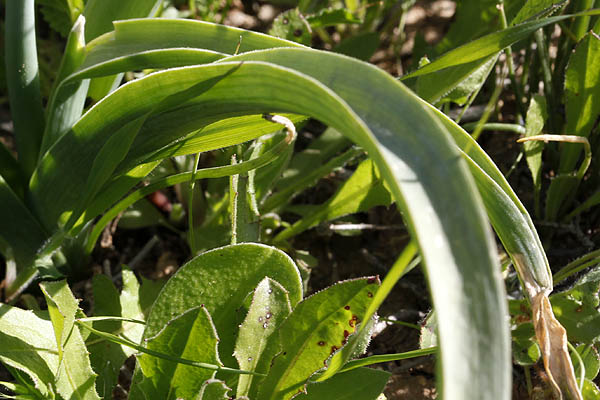Hebrew: שום מזרחי, Arabic: بصيلة , ثوم الشرق
| Scientific name: | Allium orientale Boiss. | |
| Scientific name: | Allium nigrum subsp. cyrilli (Ten.) Fiori | |
| Common name: | Oriental Garlic | |
| Hebrew name: | שום מזרחי | |
| Arabic name: | بصيلة , ثوم الشرق | |
| Family: | Amaryllidaceae, נרקיסיים | |
| Subfamily: | Allioideae (formerly treated as a separate family, Alliaceae) | |
| Tribe: | Allieae (comprises a single genus, Allium) | |
| Genus: | Allium, שום |

|
| Life form: | Geophyte | |
| Stems: | cylindrical 0.4-0.6 cm; 10-40 cm high | |
| Leaves: | Alternate, rosette, leaves about as long as stem or longer, linear to lorate, not more than 20mm wide | |
| Inflorescence: | Umbel 3-5cm in diameter, hemipherical, many-flowered; pedicels 1-2.5cm | |
| Flowers: | Perfectly white to pale rose flowers, fragrant, filaments 4-5mm; anthers yellowish | |
| Fruits / pods: | Capsule globose; 5-6x5-6mm | |
| Flowering Period: | February, March, April | |
| Habitat: | Batha, Phrygana | |
| Distribution: | Mediterranean Woodlands and Shrublands, Semi-steppe shrublands, Shrub-steppes, Deserts and extreme deserts | |
| Chorotype: | Mediterranean | |
| Summer shedding: | Ephemeral |

Derivation of the botanical name: Allium, onion, chive and garlic. From the classical Latin name for garlic. orientale, "eastern, oriental"; of the East. The Hebrew word: שום, shum, Akkadian: sumu; Aramaic: Thomas; שום, אכדית: sumu; ארמית: תומא


|